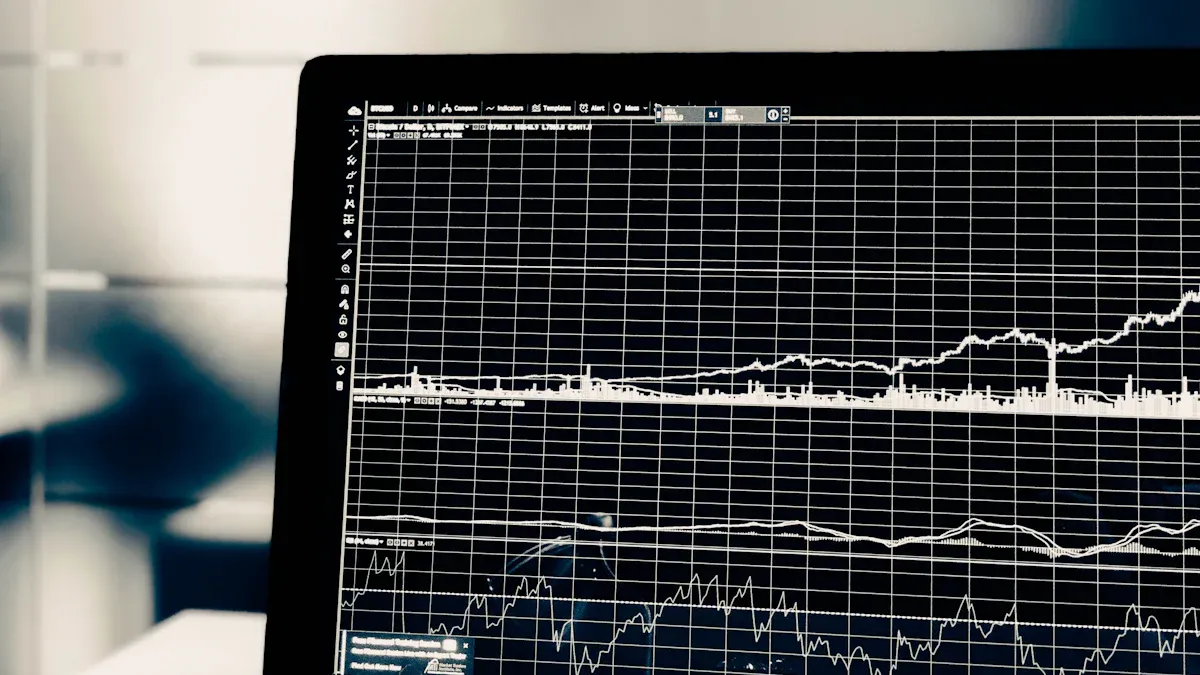Which Is Best for Incremental Processing in Spark Delta Lake or Apache Hudi
If you want to do incremental processing in Spark, you may look at Delta Lake vs. Apache Hudi. Delta Lake provides strong ACID transactions and integrates seamlessly with Spark. On the other hand, Apache Hudi allows for real-time updates and fast deletes. You can check the latest benchmarks below:
Technology | Performance Difference | Version |
|---|---|---|
Delta Lake | - | 1.2.0 |
Apache Hudi | Current Master | |
Apache Hudi | Within 6% | 0.11.1 |
When you choose between Delta Lake vs. Apache Hudi, consider these factors:
How fast it is for real-time data
How easy it is to use with Spark
Whether you need strong consistency or low-latency
You will get a guide to help you choose what works best for you.
Key Takeaways
Delta Lake is best for people who want safe data and easy use with Spark. It has strong ACID transactions and is easy to start using.
Apache Hudi is great for real-time updates and fast data work. Pick Hudi if you need to change data often or need quick reports.
Incremental processing saves time and resources by working with only new or changed data. This way, your data pipelines work better.
Both Delta Lake and Apache Hudi can grow with your data needs. Hudi is more flexible for real-time data. Delta Lake works well for batch jobs.
Think about your team's skills and what your project needs before you choose Delta Lake or Apache Hudi. Try both with your data to help you decide.
Incremental Processing in Spark

What It Means
You use Spark to work with big datasets. Incremental processing means you only handle new or changed data. You do not need to process everything again. This saves time and computer power. Upserts let you update certain parts of your data. You also get incremental consumption. This means you only get data that changed since you last checked. These ways help you skip scanning all your data. Your data pipelines run better and faster.
Incremental processing in Spark means:
You change data without redoing all your work.
You use upserts to make updates easy.
You only read data that changed since last time.
Tip: Incremental processing keeps your data up-to-date and your jobs quick.
Use Cases
Many businesses use incremental processing for fast insights and custom experiences. Here are some ways different industries use Spark:
Industry | Use Case Description |
|---|---|
Finance | Checks old logs with outside data to spot risky accounts. |
E-commerce | Looks at live transactions to give better shopping tips. |
Entertainment | Netflix uses Spark to give members shows they might like. |
Travel | TripAdvisor compares hotel prices on many sites for better suggestions. |
Food Service | OpenTable trains its system and studies reviews to help restaurants. |
You can use incremental processing for fraud checks, smart suggestions, and live reports. These examples show how you can help customers and make your work smoother.
Challenges
You may run into problems when you use incremental processing in Spark. Splitting tables by how often you update them can make searching harder for others. It can be tough to pick batch size without changing how you split data. As your data grows, it costs more to run jobs.
Common challenges include:
Hard to split tables for lots of updates.
Not much control over batch size.
Costs go up as data gets bigger.
Note: Plan your data setup well so you avoid problems and keep Spark running smoothly.
Delta Lake
Features
Delta Lake gives you strong tools for working with new data in Spark. You can see every change in your data. The platform adds special columns to your DataFrame. These columns show what changed and when it happened. You can easily find inserts, updates, and deletes. The table below lists the main features that help you track changes:
Feature | Description |
|---|---|
Lets you track and get changes made to a Delta table. | |
Row-level Change Tracking | Keeps a record of all changes, like new, updated, or deleted rows. |
Operation Type Tracking | Notes the type of change (INSERT, UPDATE, DELETE) with time and row details. |
Special Columns in DataFrame | Adds columns such as _change_type, _commit_version, and _commit_timestamp for tracking. |
Tip: These features help your Spark jobs run well and keep your data up-to-date.
Strengths
Delta Lake gives you strong ACID transaction support. This keeps your data safe and correct, even with batch and streaming jobs. You can trust your results because Delta Lake protects your data from mistakes. The platform lets you update data quickly and split data smartly. You can work with big datasets and still get fast answers. Delta Lake works well with Spark, so you do not need extra tools. When you look at Delta Lake vs. Apache Hudi, Delta Lake gives easy use and strong safety for Spark users.
Limitations
Delta Lake has some things you should know. Some advanced features, like multi-table transactions, need more setup. Some people say it is slower for lots of updates than other platforms. You may need to adjust your Spark jobs for better speed. Delta Lake vs. Apache Hudi shows Delta Lake can be slower for real-time updates. You should test your jobs to see if these limits matter for you.
Use Cases
Delta Lake works for many Spark incremental processing jobs. You can use it for ETL, streaming, and machine learning tasks. The table below shows common ways to use Delta Lake:
Use Case |
|---|
ETL (Extract, Transform, Load) |
Streaming and batch data processing |
Machine learning and analytics workflows |
Pick Delta Lake if you want strong data pipelines and easy Spark use. Delta Lake vs. Apache Hudi often depends on if you need strong safety and Spark support.
Apache Hudi
Features
Apache Hudi gives you strong tools for working with new data in Spark. You can see what changes in your data and update it easily. Advanced indexing helps you find answers faster. Apache Hudi works with streaming tools, so you can use real-time data. The table below lists the main features that help you process data fast:
Feature | Description |
|---|---|
Keeps track of records before and after they change for CDC queries. | |
Incremental Querying Capabilities | Lets you ask for only the changes since your last check. |
Integration with Streaming Frameworks | Works with Spark, Flink, and Kafka Connect for real-time jobs. |
Tip: Apache Hudi helps you process new data and use advanced indexing, so your Spark jobs finish faster.
Strengths
Apache Hudi is good for real-time updates and quick deletes. It supports change data capture, so you always know what changed. You can use incremental queries to only work with new data. Advanced indexing, like consistent hashing, keeps your searches fast. Apache Hudi works with Spark and other streaming tools. When you compare Delta Lake and Apache Hudi, Hudi is great for lots of updates and fast analytics.
Apache Hudi strengths:
Real-time data loading
Fast upserts and deletes
Advanced indexing for quick searches
Works well with Spark and streaming tools
Limitations
Apache Hudi can be hard to set up if you are new. You need to adjust settings for best speed. Some features, like multi-table transactions, are not as strong as others. If your data is very big, jobs may slow down if not tuned. In the Delta Lake vs. Apache Hudi debate, Hudi may need more skill to use well.
Note: Test your setup and watch how it runs to stop slowdowns with Apache Hudi.
Use Cases
You can use Apache Hudi for many Spark jobs that need new data. It helps you move data from databases to your data lake. You can bring in streaming data and follow data rules. Apache Hudi lets you make tables that update often and run fast analytics. You can also handle lots of updates from NoSQL stores and get data from event logs or other places.
Common use cases for Apache Hudi:
Making CDC pipelines
Handling GDPR/CCPA rules with record deletes
Making tables that update often
Loading streaming data into the lakehouse
Fast upserts for RDBMS and NoSQL data
Pick Apache Hudi if you need fast updates, real-time analytics, or must follow strict data rules. When you compare Delta Lake and Apache Hudi, Hudi is best for jobs that need speed and flexibility.
Delta Lake vs. Apache Hudi

Performance
When you look at how fast each platform works, you see some big differences. Apache Hudi is made for jobs where data changes a lot. You can update and delete data quickly with Hudi. This is because Hudi uses upsert mode by default. This setup helps you handle changes fast. Delta Lake works best when you only add new data. If you need to update or delete data often, Delta Lake can get slower. You may have to change your jobs or settings to make it faster.
Apache Hudi works well for lots of updates and deletes.
Delta Lake is good for adding new data but not for many changes.
Hudi’s upsert mode helps you handle changes fast.
Delta Lake might need extra steps for quick updates and deletes.
If you need to update or delete data fast, Apache Hudi is better for your Spark jobs.
Scalability
You want your data system to grow as your data gets bigger. Both Delta Lake and Apache Hudi can handle large amounts of data. They both use atomic transactions to keep your data safe. You can write to your tables at the same time without problems. Even if your tables have thousands of parts and billions of files, you do not get stuck with slow storage.
Hudi lets you pick how to handle updates. You can use Copy on Write or Merge on Read.
Delta Lake uses metadata to skip over data when merging. Sometimes you need to compact your data to keep it fast.
Hudi can keep track of event times and late data. This helps you keep your data correct when lots of data comes in. You only process data that changed, so reading and writing is faster. Hudi is made for streaming, so it handles real-time data well. Delta Lake can also handle big data, but you may need to tune your jobs.
Hudi lets you update and get data quickly.
Hudi’s streaming design helps with real-time data.
Delta Lake uses metadata to skip data and work faster.
Both platforms can grow with your data, but Hudi gives you more ways to handle lots of real-time data.
Ease of Use
You want a system that is easy to start and use. Delta Lake works closely with Spark. If you already use Spark, Delta Lake is simple to set up. You do not need extra tools to get started. Apache Hudi gives you more choices, but you may need to change settings for best speed. If you are new to Hudi, it can be harder to learn.
Delta Lake is easy for Spark users to set up.
Apache Hudi has more features but needs more setup.
Delta Lake is better for beginners.
Hudi is good if you want more control and special features.
Pick Delta Lake if you want something simple. Choose Hudi if you want more options and control.
Integration
You want your data system to work with other tools. Delta Lake works well with AWS Glue. You can use Delta Lake tables without extra files, which makes things easier. Delta Lake is built to work with Apache Spark, so your jobs run well. This makes Spark jobs faster and easier to manage.
Apache Hudi also works with Spark, Flink, and Kafka Connect. You can use different data formats and streaming tools with Hudi. Hudi lets you build real-time data pipelines and handle big data.
Delta Lake works well with Spark and is easy to use. Hudi gives you more choices for streaming and using many tools.
Community Support
You want help and good guides for your data system. Both Delta Lake and Apache Hudi have active groups and lots of guides. Delta Lake’s group is older and has big help from Databricks. Apache Hudi has been open-source longer and has many features. Both get updates often and have strong forums.
Aspect | Delta Lake | Apache Hudi |
|---|---|---|
Community Maturity | Older group, big help from Databricks | Open-source longer, many helpers |
GitHub Stars | More stars on GitHub | Fewer stars, but many helpers |
Active Development | Gets updates often | Gets updates often |
Documentation | Lots of guides | Lots of guides |
Apache Hudi has many features and helpers.
Both have good guides and get updates.
You can find help and resources for both Delta Lake and Apache Hudi.
Decision Guide
When to Choose Delta Lake
Pick Delta Lake if you want your data to stay safe. It works well with Spark and is easy to set up. Delta Lake uses ACID transactions to keep your data correct. You can trust it for batch and streaming jobs. If your team already uses Spark, Delta Lake will feel familiar.
Consider Delta Lake if:
You need ACID transactions to keep data safe.
You want to use Spark without trouble.
Your jobs mostly add new data, not many changes.
You like good guides and help from Databricks.
Your team wants something easy and quick to learn.
Tip: Delta Lake lets you build strong data pipelines. You spend less time setting up and more time on your work.
When to Choose Apache Hudi
Choose Apache Hudi if you change or delete data a lot. Hudi is great for real-time jobs and fast searches. You can use Hudi for change data capture and quick analytics. Hudi gives you more control over updates. It works with streaming tools like Flink and Kafka.
Choose Apache Hudi if:
You need fast upserts and deletes for changing data.
You want to work with data almost right away.
Your jobs need advanced indexing for quick searches.
You need to build CDC pipelines or handle event-driven data.
Your team can handle a setup that needs more tuning.
Note: Apache Hudi gives you speed and control for tough jobs. You can make your jobs run better and handle more data.
Scenarios
Look at these examples to help you pick. Each one shows when Delta Lake or Apache Hudi works best.
Scenario | Best Choice | Why |
|---|---|---|
ETL pipelines with few updates | Delta Lake | Delta Lake is easy to set up and keeps data safe. |
Real-time analytics on event data | Apache Hudi | Hudi is fast for upserts and works with streaming. |
GDPR/CCPA compliance with deletes | Apache Hudi | Hudi can delete records and track changes for rules. |
Machine learning feature stores | Delta Lake | Delta Lake uses ACID transactions and works well with Spark for ML. |
CDC from transactional systems | Apache Hudi | Hudi is good for change data capture and quick queries. |
Data lake with mixed workloads | Delta Lake | Delta Lake handles batch and streaming jobs and keeps data safe. |
📝 Recommendation: Try both platforms with your own data. See which one is faster and easier for your team before you choose.
Summary List:
Use Delta Lake for simple and Spark-friendly pipelines.
Use Apache Hudi for fast and flexible data jobs.
Pick what matches your team’s skills and your project’s needs.
Think about your data, your team, and your goals. Both Delta Lake and Apache Hudi have strong tools for Spark incremental processing. Your choice will help you build better data solutions.
You have learned when to pick Delta Lake or Apache Hudi for Spark. Delta Lake is good if you want simple pipelines and safe data. Apache Hudi is better if you need real-time updates and quick deletes. You should look at your own data and jobs before you choose.
Try both platforms with your own data and jobs.
Check which features and speed work best for you.
Read guides like using Apache Hudi™ Data with Apache Iceberg™ and Delta Lake or building open data lakehouses.
Make sure you pick the tool that fits your needs. This will help you build a strong Spark data pipeline.
FAQ
What is incremental processing in Spark?
Incremental processing means you only work with new or changed data. You do not scan the whole dataset. This method saves time and resources. You get faster results and lower costs.
Can you use Delta Lake and Apache Hudi together?
You can use both platforms in one data lake. Some teams store different tables in each format. You must plan your architecture and test compatibility. Mixing tools may add complexity.
Which platform is easier for beginners?
Delta Lake is easier for you to start with if you use Spark. You get simple setup and strong guides. Apache Hudi needs more tuning and knowledge. You may spend more time learning Hudi.
How do you handle deletes in Apache Hudi?
Apache Hudi lets you delete records quickly. You use upsert and delete operations in your Spark jobs. Hudi tracks changes and supports compliance needs like GDPR.
Does Delta Lake support real-time streaming?
Delta Lake supports streaming with Spark Structured Streaming. You can build pipelines that process data as it arrives. You get ACID guarantees for both batch and streaming jobs.
See Also
Comparing Apache Iceberg And Delta Lake Technologies
Streamlining Data Processing With Apache Kafka's Efficiency
Effective Strategies For Analyzing Large Data Sets

